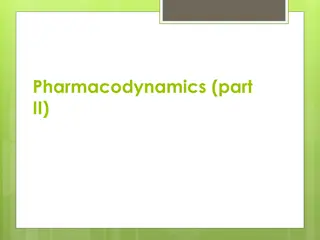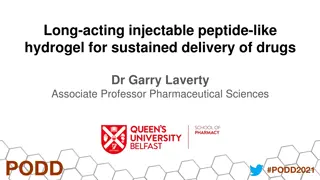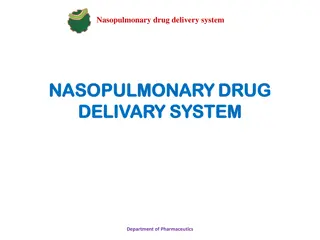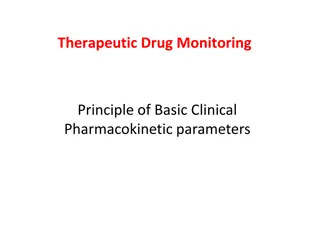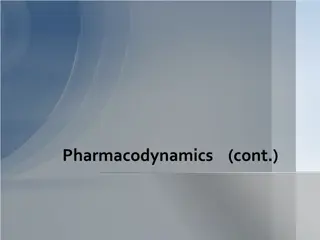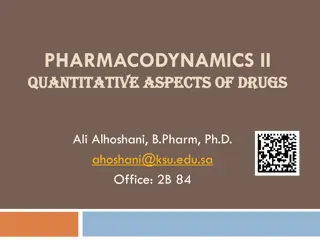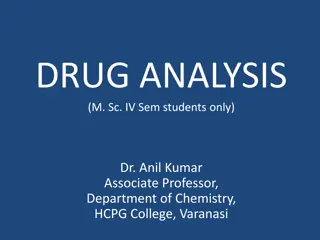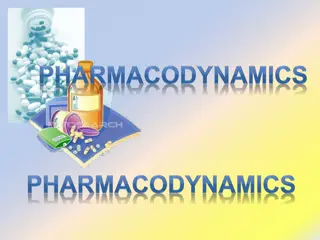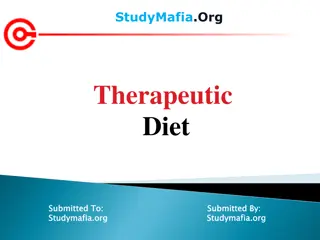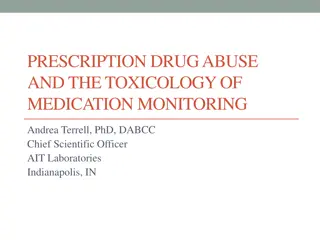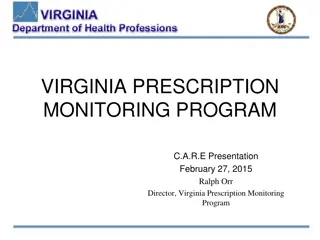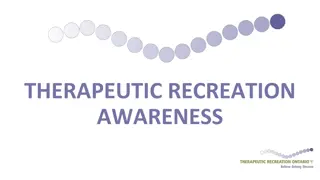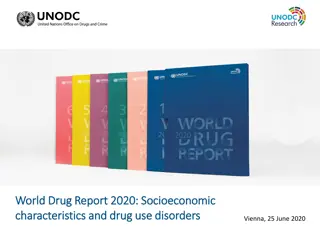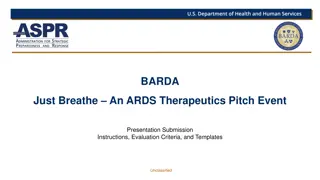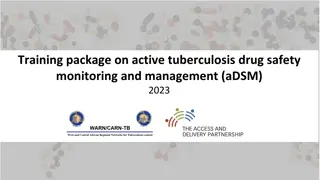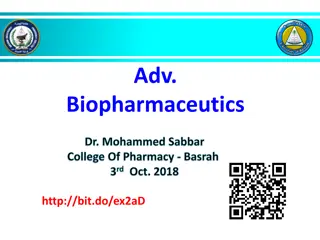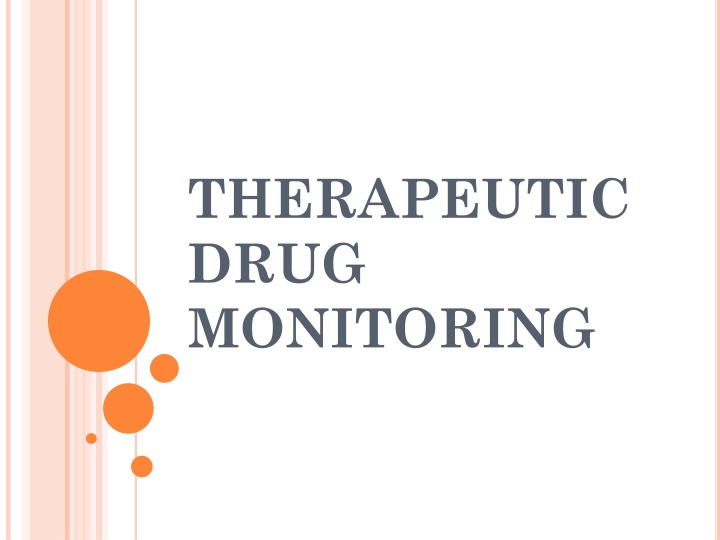
Therapeutic Drug Monitoring for Optimized Treatment
Therapeutic Drug Monitoring (TDM) is a clinical practice that involves monitoring drug levels in a patient's blood to tailor dosage regimens for optimal effectiveness and safety. TDM helps maintain drug concentrations within therapeutic ranges, ensuring individualized treatment for maximum benefits. Learn about the TDM process, its importance, and how it aids in optimizing drug therapy.
Uploaded on | 1 Views
Download Presentation

Please find below an Image/Link to download the presentation.
The content on the website is provided AS IS for your information and personal use only. It may not be sold, licensed, or shared on other websites without obtaining consent from the author. If you encounter any issues during the download, it is possible that the publisher has removed the file from their server.
You are allowed to download the files provided on this website for personal or commercial use, subject to the condition that they are used lawfully. All files are the property of their respective owners.
The content on the website is provided AS IS for your information and personal use only. It may not be sold, licensed, or shared on other websites without obtaining consent from the author.
E N D
Presentation Transcript
THERAPEUTIC DRUG MONITORING
INTRODUCTION Therapeutic drug monitoring (TDM) is the clinical practice of measuring specific drug at designated intervals to maintain a constant concentration in a patients blood stream, thereby optimizing individual dosage regimen. In other words, TDM refers to the individualization of drug dosage by maintaining plasma or blood concentration within a targeted therapeutic range or window. The goal of this process is to individualization of therapeutic regimen for optimal patient benefits.
TDM is based on the principle that for some drugs there is a close relationship between the plasma level of the drug and its clinical effect TDM aims to promote optimum drug treatment by maintaining serum drug concentration within a therapeutic range.
THE TDM PROCESS Decision to request drug level Biological samples The request Laboratory measurement Result communication by laboratory Clinical interpretation Therapeutic management
NEED FOR TDM To assist the optimization of drug therapy, including minimizing the risk of serious drug toxicity. To identify a drug or substance which may be contributing to the presentation of a medical emergency. It is performed for the drug with narrow therapeutic index, where small change in dose of efficiency or toxicity. Useful in the patient with bipolar disorder receiving lithium who continuous to have a symptoms of mania.
Used to assess the appropriateness of the dosing regimen to maintain this minimum concentration & also used to minimize the time period needed for dosage adjustment.
THE BIOLOGICAL SAMPLE Once a decision has been made to perform TDM, it is necessary to obtain blood sample or biological fluid sample due to which meaningful interpretation of drug concentration result achieved. Blood sample should be taken once steady- state drug concentration have been achieved i.e., after at least 5 half-lives. Usually blood sample are collected at the end of dosage interval and immediately before the next dose. For drugs with long half lives samples can be collected at any time once the distribution phase is over.
THE MANAGEMENT OF THERAPY USING PLASMA CONCENTRATION Request to laboratory Quality Assessment Analysis Interpretati on Clinical Action Report Record Previous Results
FACTORSTOBECONSIDEREDDURING TDM Patient s demographic Dosage regimen and duration of therapy Pathologic factors Alcohol and tobacco use Medicine or sampling errors Laboratory errors Sampling time Patient compliance Individual capacity to distribute, metabolise and discrete the drug Altered protein binding
PATIENTS DEMOGRAPHIC: It includes patients information, patient age, indication for TDM, precipitation, etiology, past, present or future treatment, and investigation. DOSAGE REGIMEN AND DURATION OF THERAPY: Sufficient time should elapse to allow steady state to be achieved before TDM is performed. If a loading dose has not be given, this means at least 5 half lives of the drug should elapse. PATHOLOGIC FACTORS: The patient s comorbidities should be taken into consideration when interpretation of TDM results. Condition such as vomiting, diarrhoea, inflammatory bowl disease. ALCOHOL AND TOBACCO USE: Chronic use of alcohol ha been shown to cause non specific hepatic microsomal enzyme induction, resulting in increased clearance and decreased serum concentration of hepatically cleared drugs such as phenytoin.
MEDICINE OR SAMPLING ERRORS: In cases where TDM result is incompatible with drug administration records, the possibility of medication or sampling error should be considered. LABORATORY ERRORS: If laboratory error should be suspected, the laboratory should be contacted and asked to repeat the assay. SAMPLING TIME: The serum concentration of drug depends on time when the blood drawn for a TDM assay was sampled in a relation to the last dose. PATIENT COMPLIANCE: If the concentration of drug is lower than expected, the possibilities of non compliance should be considered.
INDIVIDUAL CAPACITY TO DISTRIBUTE, METABOLISE AND DISCRETE THE DRUG: Patient with renal impairment have a reduced ability to excrete renally cleared drugs & the interpretation of TDM for renally cleared drugs should always be made in context. ALTERED PROTEIN BINDING: For drugs which are strongly bound to plasma protein, a reduced level of albumin may result in higher concentration of unbound drug.

